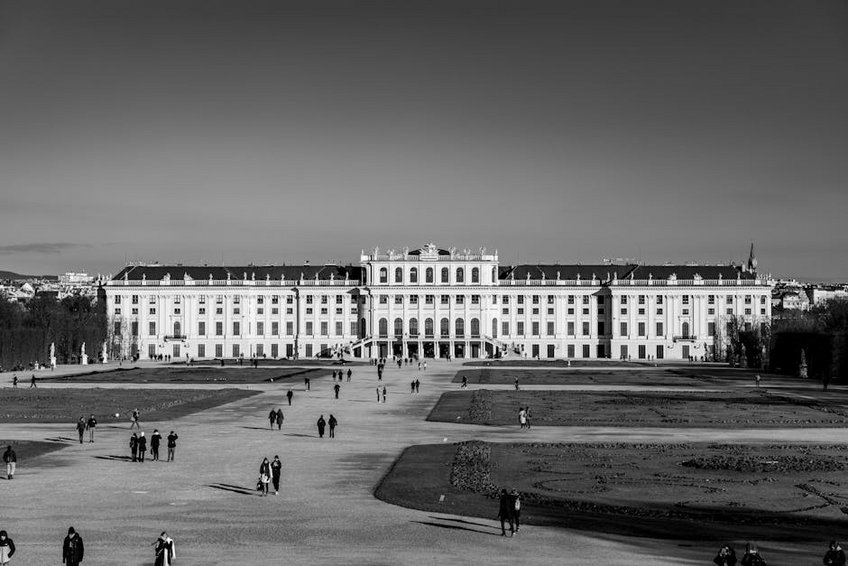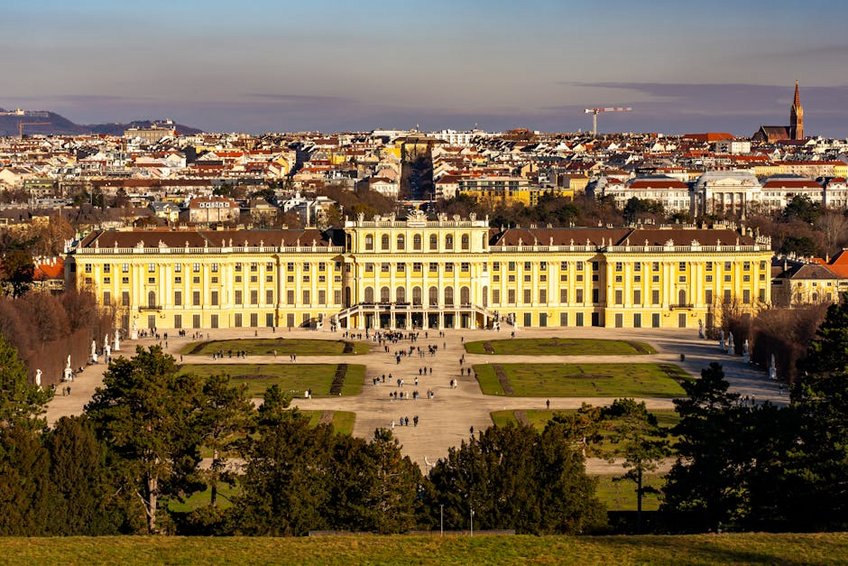Vienna Schönbrunn Palace: The Ultimate Visitor’s Guide
Stepping into the magnificent grounds of Vienna Schönbrunn Palace is like walking directly into the heart of the Habsburg Empire. This iconic UNESCO World Heritage site stands as one of Europe’s most significant cultural monuments, offering you a breathtaking glimpse into imperial history, stunning Baroque architecture, and sprawling manicured gardens. Whether you’re a history enthusiast, an architecture admirer, or simply looking to experience Vienna’s premier attraction, Schönbrunn Palace promises an unforgettable journey through time. From the opulent state rooms where Mozart once performed to the serene pathways of its vast gardens, every corner tells a story of power, art, and elegance. Planning your visit to Vienna Schönbrunn Palace requires some insight to make the most of your experience, and this guide will walk you through everything you need to know, from ticket options to hidden gems you won’t want to miss.
Vienna Schönbrunn Palace Essential Information
Before you embark on your royal adventure, it’s crucial to understand the basic facts about Vienna Schönbrunn Palace. Originally a hunting lodge, it was transformed into a lavish imperial residence by Empress Maria Theresa in the 18th century. Today, it welcomes millions of visitors annually, showcasing 1,441 rooms, though only 40 are open to the public through various tour options. The palace is not just a single building but a massive complex that includes the palace itself, the world’s oldest zoo, a palm house, Roman ruins, and the glorious gardens. Most visitors spend between half a day to a full day here, depending on how deeply they want to explore. The site is overwhelmingly impressive, so having a plan will help you navigate the crowds and ensure you see what matters most to you.
What You Need to Know Before Visiting
- Purchase tickets online in advance to avoid long queues, especially during peak season from April to October.
- Wear comfortable walking shoes as you’ll cover several kilometers exploring the gardens and various attractions.
- Download the official Schönbrunn app for an audio guide and interactive map to enhance your self-guided tour.
- Budget Option: Imperial Tour (22 rooms) at $20 USD per adult, focusing on the main palace rooms and free garden access.
- Mid-Range Option: Grand Tour (40 rooms) at $24 USD, including more rooms and audio guide, plus paid garden attractions like the Maze ($5.50 USD).
- Luxury Option: Classic Pass at $44 USD, covering Grand Tour, Maze, Orangery Garden, and Gloriette viewing platform for comprehensive experience.
- Official Schönbrunn Palace Website
- Vienna Tourist Board
Key Historical Details
Schönbrunn Palace served as the main summer residence of the Habsburg rulers, with its history dating back to the 14th century. The name “Schönbrunn” translates to “beautiful spring,” inspired by a natural water source discovered on the grounds. The palace you see today primarily reflects the 18th-century Baroque style under Empress Maria Theresa, who made it the cultural and political hub of the empire. It was also the childhood home of Emperor Franz Joseph I and the place where the young Mozart performed for Maria Theresa. Understanding this rich history will significantly deepen your appreciation as you walk through the ornate halls and expansive grounds.

Vienna Schönbrunn Palace Planning Your Trip
Effective planning is the key to enjoying Vienna Schönbrunn Palace without feeling rushed or overwhelmed. The complex is massive, covering 186 hectares (459 acres), so you’ll want to prioritize based on your interests—whether that’s imperial history, botanical gardens, or family-friendly attractions like the zoo. Start by deciding which ticket package suits your schedule: the Imperial Tour covers 22 rooms and takes about 30-40 minutes, while the Grand Tour includes 40 rooms and requires 50-60 minutes. Don’t forget to factor in time for the gardens, maze, and other outdoor attractions, which can easily add 2-3 hours to your visit. Weekdays are generally less crowded than weekends, and mornings tend to be quieter than afternoons.
Best Time to Visit Vienna Schönbrunn Palace
The ideal time to visit Vienna Schönbrunn Palace depends on what you want to experience. Spring (April to June) offers mild weather and blooming gardens, making it perfect for photography and leisurely strolls. Summer (July and August) brings the busiest crowds but also the full vibrancy of the gardens and extended opening hours. Autumn (September to October) provides cooler temperatures and beautiful fall foliage, while winter (November to March) has fewer visitors and the magical Christmas Market on the palace grounds. For the best balance of good weather and manageable crowds, aim for May or September. Arrive right at opening time (8:30 AM) to enjoy the palace interiors with fewer people.
Budget Planning and Costs
Essential Preparation Checklist
To make your visit smooth and enjoyable, prepare accordingly. Book your tickets online at least a day in advance to secure your time slot and avoid waiting in ticket lines that can exceed an hour during peak times. Check the weather forecast and dress in layers, as you’ll transition between indoor palace rooms and outdoor gardens. Bring a refillable water bottle—there are fountains throughout the gardens—and consider packing a light snack, though there are cafes on site. Don’t forget your camera for the stunning photo opportunities, and if you’re visiting with children, familiarize yourself with family-friendly options like the Children’s Museum and Zoo.
Vienna Schönbrunn Palace Top Attractions and Activities
While the palace itself is the main draw, Vienna Schönbrunn Palace offers an array of attractions that cater to diverse interests. The Imperial Apartments showcase breathtaking rooms like the Great Gallery, where grand balls were held, and the Millions Room, adorned with rare rosewood and precious miniatures. Beyond the palace walls, the gardens present a masterpiece of landscape design with symmetrical patterns, mythological statues, and beautifully maintained flower beds. The Neptune Fountain at the foot of the hill provides a dramatic focal point, while the Gloriette structure atop the hill offers panoramic views of Vienna. For families, the Tiergarten Schönbrunn (the zoo) and the Children’s Museum provide engaging alternatives to the historical tours.
Must-See Highlights
Your visit to Vienna Schönbrunn Palace wouldn’t be complete without experiencing these iconic spots. The Great Gallery, a 40-meter-long hall adorned with frescoes and crystal mirrors, will leave you breathless with its Baroque grandeur. The Palace Gardens, free to enter, are worth hours of exploration alone, featuring the perfectly manicured parterres, the Roman Ruins, and the Obelisk Fountain. Make the climb up to the Gloriette—either by walking or taking the convenient shuttle—for that classic postcard view of the palace against the Vienna skyline. During Christmas season, the palace courtyard transforms into one of Vienna’s most magical Christmas markets, complete with traditional crafts and warm punch.
Hidden Gems and Local Favorites
Beyond the main tourist path, Vienna Schönbrunn Palace holds several lesser-known treasures that offer a more intimate experience. The Orangery Garden, once used to protect citrus trees during winter, now hosts classical concerts in the evening—a magical way to experience the palace after hours. The Crown Prince Garden, located near the palace cafe, provides a quiet retreat with beautiful floral displays. For a unique perspective, visit the Wagenburg (Imperial Carriage Museum) located on the grounds, which displays over 100 imperial vehicles, including the extravagant carriage used for coronations. Locals often enjoy the gardens early in the morning for peaceful walks before the crowds arrive.
Vienna Schönbrunn Palace Practical Travel Information
Navigating your visit to Vienna Schönbrunn Palace requires some practical knowledge about transportation, tickets, and facilities. The palace is located about 3 miles southwest of Vienna’s city center, easily accessible by public transportation. The U4 metro line stops directly at Schönbrunn station, just a 5-minute walk from the palace entrance. Multiple tram and bus lines also serve the area. If you’re driving, there are paid parking facilities nearby, but public transport is highly recommended due to limited parking and Vienna’s excellent transit system. The palace offers facilities including restrooms, information points, cloakrooms, and several dining options ranging from casual cafes to the more formal restaurant in the palace orangery.
| Category | Options/Features | Price Range (USD) |
|---|---|---|
| Palace Tours | Imperial Tour (22 rooms), Grand Tour (40 rooms) | $20-24 |
| Garden Attractions | Maze, Orangery, Gloriette viewing platform | $5.50-8.50 |
| Combined Tickets | Classic Pass, Sisi Ticket (includes other palaces) | $44-42 |
| Transportation | U-Bahn (metro), Tram, Bus, Taxi | $2.50-15 |


